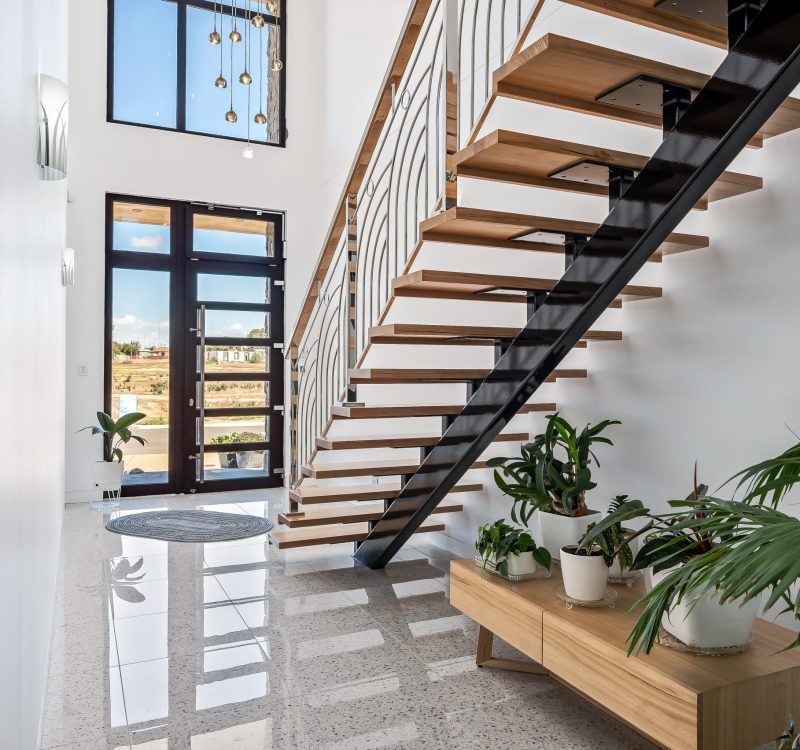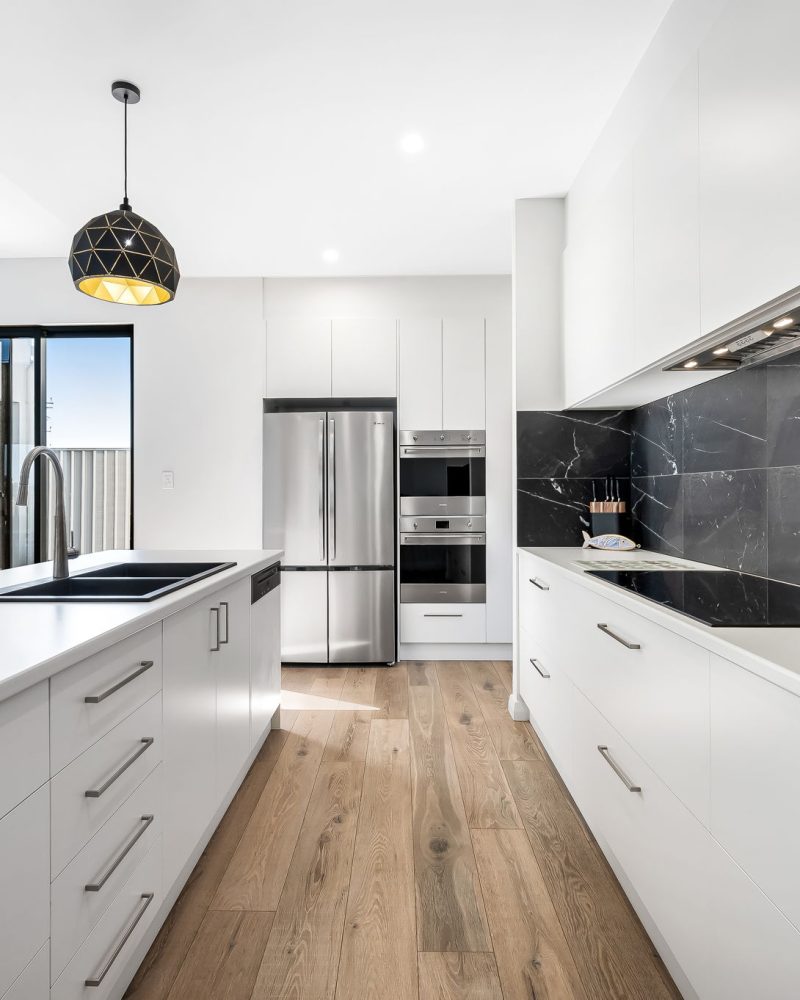If you’re planning on building a house in South Australia, you’ll soon realise it’s about more than just choosing a floor plan. From selecting the right block of land and navigating council requirements, through to managing budgets and finding a builder you can trust — every decision shapes the outcome.
At Urban3, we’ve built hundreds of custom homes across Adelaide and South Australia. Our homes are created with careful consideration of land, orientation, and the unique needs of South Australian families. Drawing on that experience, here are the best practices to help you approach the process with clarity and confidence.
Building a new home in South Australia is an exciting journey, whether you’re a first home buyer or looking to upgrade your lifestyle. South Australia’s diverse landscape offers everything from vibrant city living to peaceful coastal retreats, making it the perfect place to create your dream home. With a wide range of land packages and display homes available, there’s something to suit every budget and vision.
The home building process in South Australia can seem complex at first, but with the right builder by your side, you’ll have expert guidance every step of the way. From selecting the ideal block of land to choosing a home design that fits your needs, you’ll discover countless options to help you build a house that’s truly your own. Whether you’re drawn to the energy of Adelaide or the tranquility of the regions, South Australia’s property market offers fantastic opportunities for new homes, tailored to your lifestyle and dreams.
Where you decide to build directly influences how you live day-to-day and the future value of your home. South Australia offers everything from buzzing inner-city living to family-friendly suburbs and relaxed coastal townships.
When narrowing down your options, think about:
Popular suburbs such as Mawson Lakes, Aldinga Beach, and Angle Vale attract families for their community feel and amenities, but the best choice will always come down to your lifestyle goals.
👉 Urban3 tip: Before you commit to land, ask your architect or planning consultant how the council treats setbacks, garages, and façades. This ensures the block can accommodate the design you have in mind.

The building journey starts with land selection and finishes with the keys in your hand — but it’s what happens in between that makes all the difference.
Key steps include:
Many clients find it helpful to engage professionals — such as a buyer’s agent or independent consultant — to keep contracts and approvals on track. The goal is to reduce stress so you can actually enjoy the process.
Choosing a builder is the most critical decision in your project. A reputable builder ensures quality, compliance, and a smooth process from start to finish.
Urban3 has built its reputation in Adelaide and South Australia on three things:
Urban3 is committed to building strong relationships with customers and prioritizing their satisfaction throughout every stage of the process.
While we don’t have an in-house architect, we regularly collaborate with clients’ architects to ensure the build is delivered exactly as envisioned. This means you get the design flexibility you want, supported by a builder who knows how to deliver it.
Before signing with any builder in South Australia, ask:
These questions reveal how the builder works day-to-day and whether they’re aligned with your expectations.
South Australia’s climate and lifestyle call for designs that balance comfort with practicality. Key considerations include:
Urban3 offers a range of houses designed for different lifestyles and budgets.
At Urban3, we work with your architect or preferred designer to adapt plans that suit your block, your lifestyle, and your budget. For example, we can create a house design specifically tailored for a sloping block or a coastal location. From coastal retreats to city residences, no two homes are ever the same.

One of the most important steps in building a house in South Australia is setting — and sticking to — a realistic budget. Key costs include:
Fixed-price house and land packages can provide certainty, but they may also limit your design flexibility. These packages are often compared to cheaper alternatives, but the trade-off may be fewer inclusions or less customisation. Some packages offer a complete solution, including design, approvals, and construction, making the process more convenient for buyers. With a custom build, expect some variation in costs but also the benefit of a home tailored to you.
👉 Urban3 tip: Prioritise must-haves first, then consider the “nice-to-haves” if the budget allows. This ensures you don’t compromise on the essentials.
For first home buyers in South Australia, starting your home building journey can feel overwhelming, but the right support makes all the difference. Begin by researching land packages and house and land packages that fit your budget and lifestyle. Understanding the building process—from buying land to signing the contract—will help you make confident decisions along the way.
It’s important to work with a reputable builder who can guide you through each stage and provide helpful information tailored to first home owners. Take advantage of government incentives and explore affordable house and land packages designed specifically for first home buyers. By staying informed and asking questions, you’ll be well-prepared to navigate contracts, costs, and the many choices involved in building your first home in South Australia.
Every build has its challenges, but with the right preparation they don’t have to become setbacks.
At Urban3, we tackle these issues head-on with proactive planning and transparent communication, so our clients always know what’s happening and why.
Once you’ve found your dream home and are ready to move forward, the next step is signing the contract. This is a crucial part of the home building process, as it outlines all the costs, fees, and inclusions for your new home. Your builder should provide a clear and detailed contract, ensuring you understand exactly what is covered before you sign.
Take the time to review the contract carefully, and don’t hesitate to ask your builder for clarification on any points you’re unsure about. Understanding the terms and conditions will help you avoid surprises and ensure your building experience is as smooth as possible. Remember, signing the contract is a major milestone on the way to seeing your dream home become a reality.
Understanding Your Building Contract
Your building contract is the foundation of your new home project, so it’s essential to understand every detail. The contract should clearly outline the construction process, payment schedules, and expected completion dates. As the homeowner, knowing your responsibilities and what to expect from your builder will help keep the project on track.
Don’t be afraid to ask your builder for helpful information or advice if anything in the contract is unclear. A professional builder will offer support and answer your questions, ensuring you feel confident and informed throughout the building journey. Building a new home is a significant investment, so take the time to review your contract thoroughly and seek advice whenever you need it. This way, you can move forward with peace of mind, knowing your dream home is in good hands.
Building a house in South Australia is a rewarding process when you have the right guidance. From choosing your block and navigating council approvals, to managing budgets and selecting the right builder, each step is crucial.
With Urban3, you get a building partner who combines craftsmanship, transparency, and personal service — so you can enjoy the journey as much as the outcome.
For more information or personalized guidance, contact Urban3 today.
What factors should I consider when choosing a location in South Australia?
Look at convenience, school zones, and council regulations, as well as how the suburb fits your lifestyle.
What are house and land packages?
They combine the purchase of land with a pre-designed home, offering simplicity but less flexibility than a fully custom build.
How much does it cost to build a house in South Australia?
Costs vary widely. A quality custom home typically starts around $2,000–$3,500 per sqm, depending on design, site conditions, and finishes. Site works, retaining, and council fees can add significantly, so always include a contingency fund.
How long does it take to build a house in South Australia?
On average, allow 9–12 months from contract signing to handover for a custom home, though complex designs or council delays can extend this timeline.
Note: After signing a contract, there is usually a cooling off period, which is a set period during which you can withdraw from the sale under certain conditions. This period gives buyers time to reconsider their decision and review contract terms.
Do I need to choose land before speaking with a builder?
Not necessarily. In fact, engaging a builder early can help you avoid buying land that doesn’t suit the design you want. Many clients bring us potential blocks before committing, so we can advise on suitability.
How can I manage unexpected expenses during construction?
Set aside a 10–15% contingency fund and stay actively involved in decision-making. Regular cost tracking with your builder also helps avoid surprises.
Why is choosing the right builder important?
The builder determines the quality of the outcome, the smoothness of the process, and how well your vision is realised.
What challenges should I expect when building a house?
Budget changes, weather delays, and communication issues are common — but the right builder will help you anticipate and overcome them.